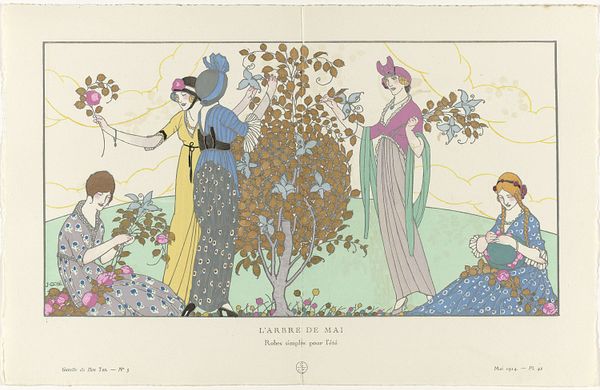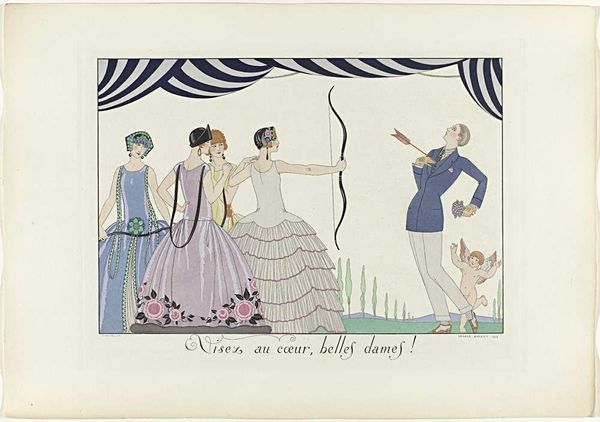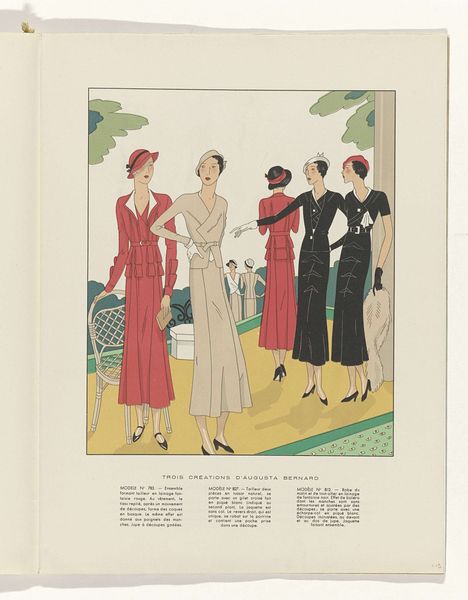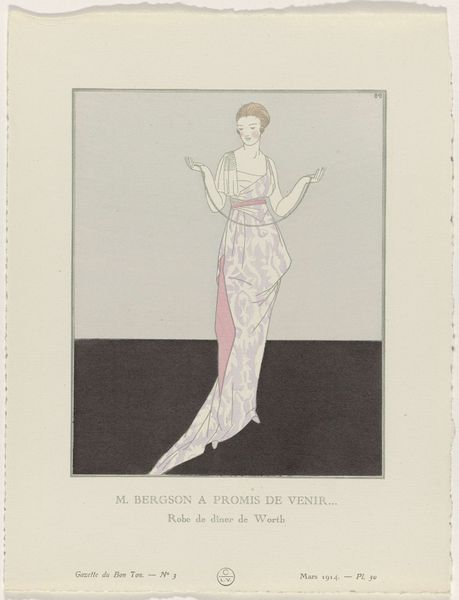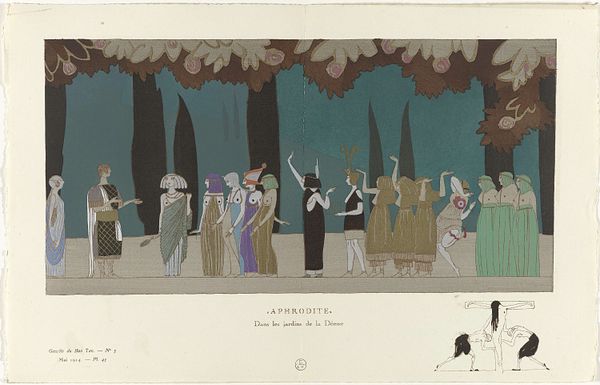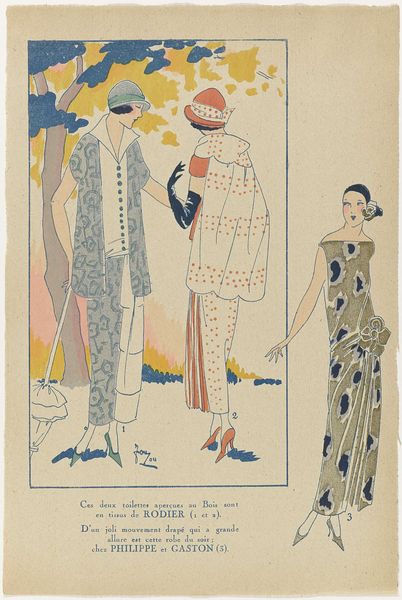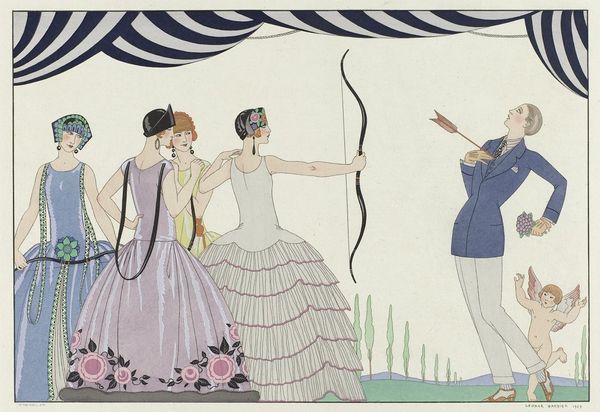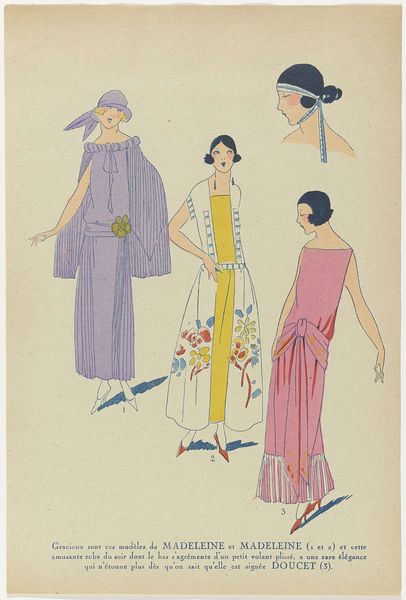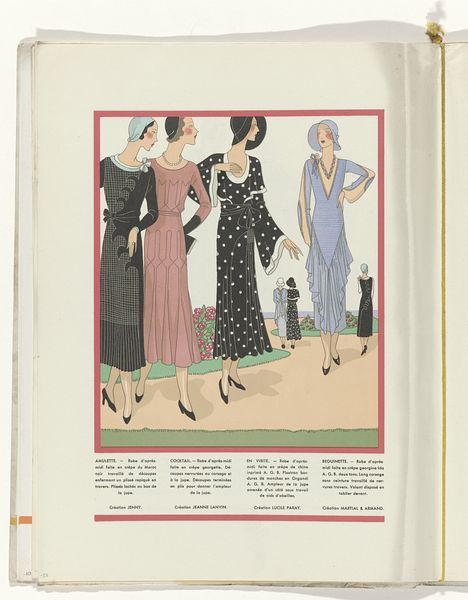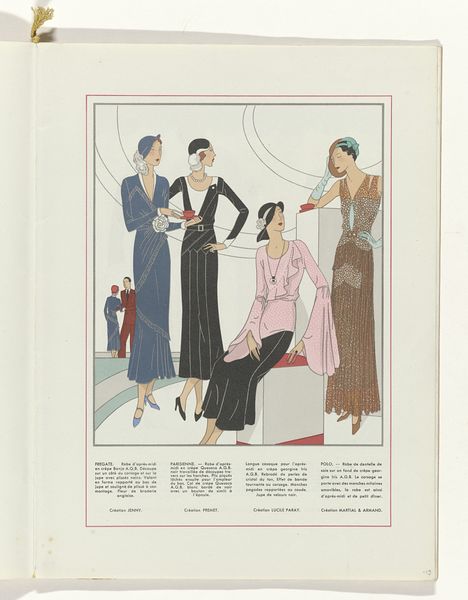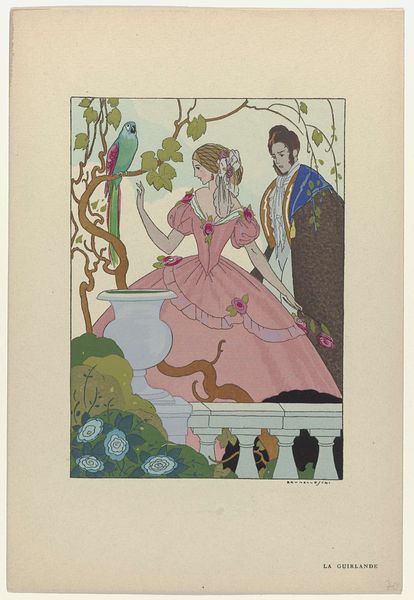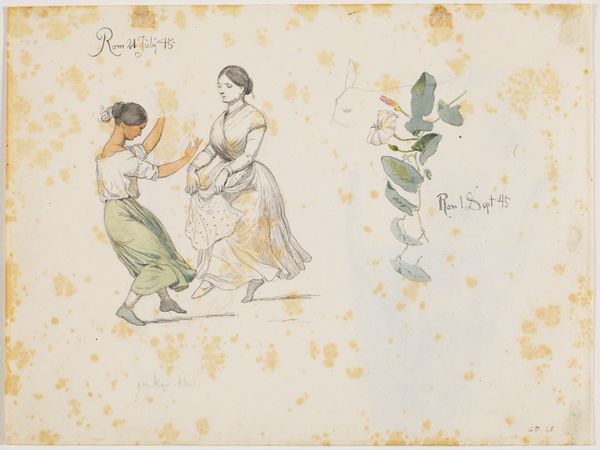
Dimensions: height 246 mm, width 382 mm
Copyright: Rijks Museum: Open Domain
Bernard Boutet de Monvel’s pochoir print was made around 1914 in France, and captures a moment of leisure. The artist used stencils to build up successive layers of color and detail, creating a sharp, graphic style which was favored at the time for fashion plates and other commercial applications. Pochoir, or hand-coloring through stencils, has its own inherent qualities, particularly its ability to render flat blocks of color and crisp outlines. Each color had to be applied separately, requiring meticulous labor to cut and align the stencils. It was an ideal process for reproducing the intricate designs of haute couture fashion, like the Worth gowns shown here. This method of production reflects a desire to balance handcrafted quality with efficient production. While the original design might have been conceived by an artist, the actual coloring process would have been executed by skilled artisans, highlighting the collaborative nature of the fashion industry. We can appreciate the degree of work involved in bringing even a seemingly simple image like this to life. It encourages us to reflect on the wider social and economic context of fashion and printmaking in early 20th century France, blurring the boundaries between commercial design and fine art.
Comments
No comments
Be the first to comment and join the conversation on the ultimate creative platform.
